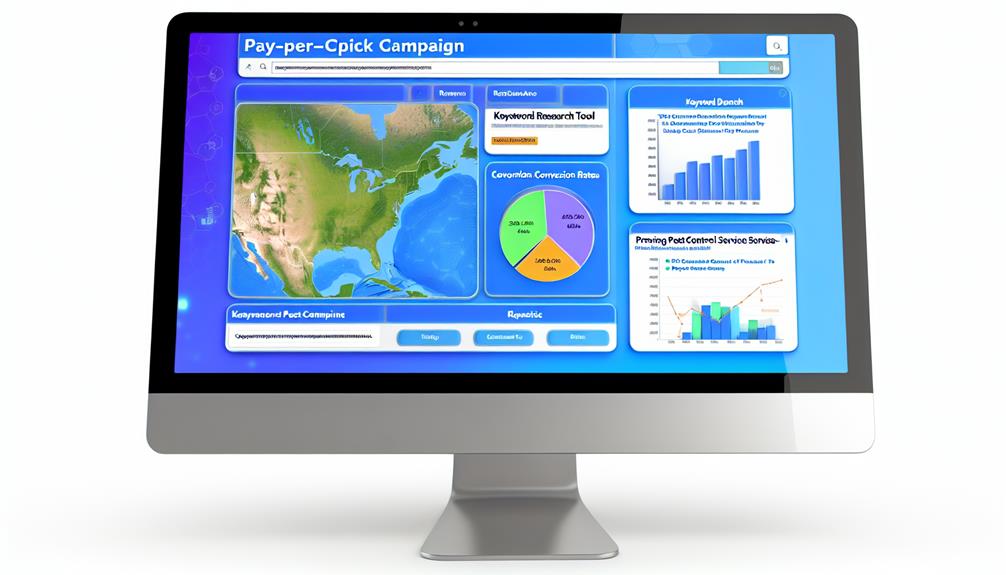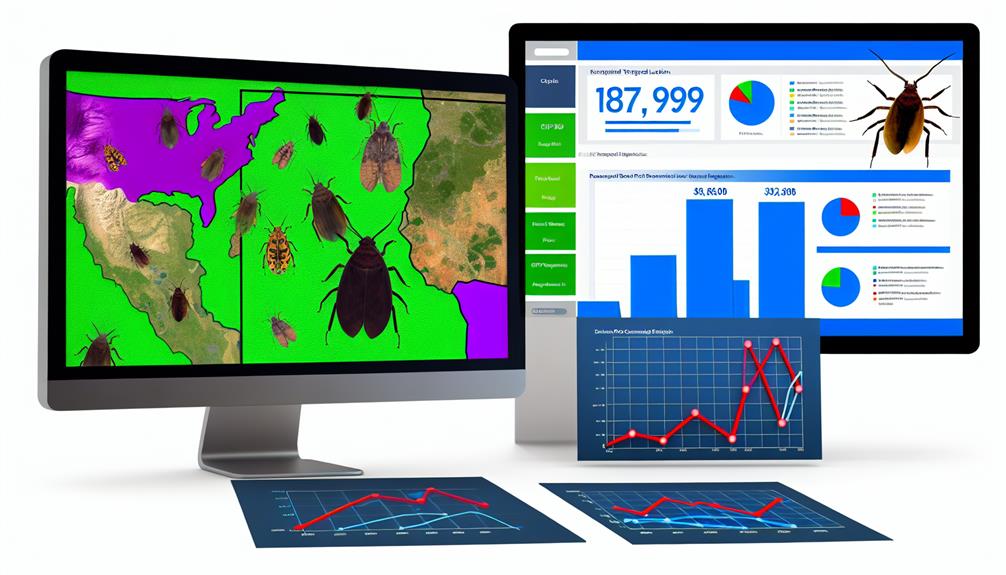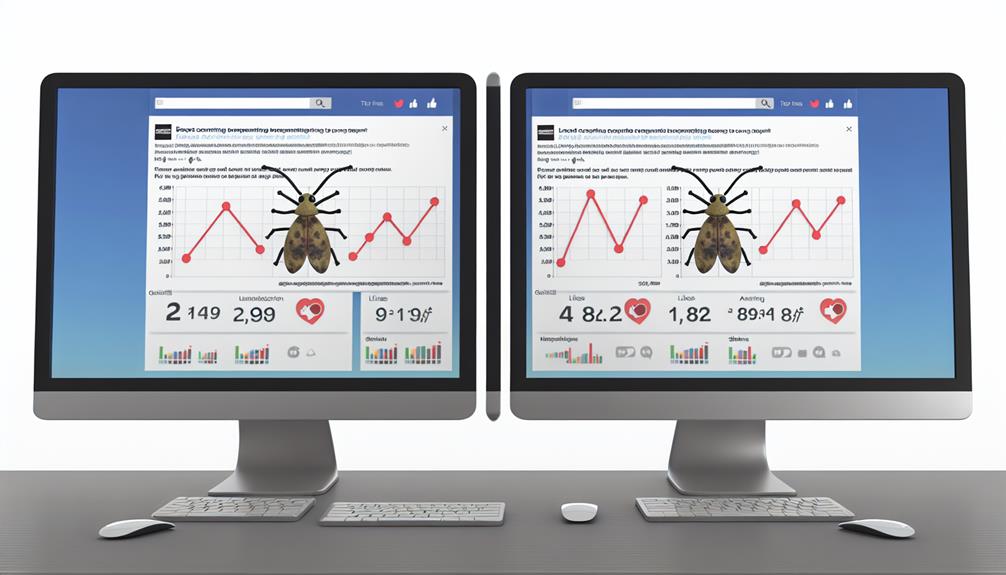So, you’ve dabbled in the world of pest control PPC, hoping to rid yourself of the pesky inefficiencies and skyrocket your return on investment. But have you truly mastered the art of optimizing your PPC campaigns for maximum ROI?
There’s a fine line between simply running ads and strategically fine-tuning every aspect of your pest control PPC to ensure that every click counts.
Stick around to uncover the secrets to elevating your pest control PPC game and reaping the rewards.
Table of Contents
ToggleKey Takeaways
- Conduct comprehensive keyword research using tools like Google Keyword Planner, SEMrush, or Ahrefs to identify relevant long-tail keywords specific to pest control services.
- Craft compelling ad copy that highlights the unique selling proposition, focuses on customer benefits, and conveys trust and authority through testimonials and certifications.
- Implement local targeting strategies by utilizing local SEO, geo-targeted campaigns, location-based keywords, location extensions, and radius targeting to reach the right audience.
- Implement robust conversion tracking tools, utilize attribution modeling, set up custom conversion events, and perform A/B testing to measure and analyze campaign outcomes, make informed decisions, and continuously improve PPC campaigns for maximum ROI.
Understanding Pest Control Keywords

To effectively optimize your pest control PPC campaign, it’s crucial to understand the strategic use of pest control keywords to target the right audience and maximize your conversions. This begins with comprehensive keyword research.
Start by identifying relevant keywords that potential customers are likely to use when searching for pest control services. Look for long-tail keywords that are specific to the services you offer, such as ‘termite inspection in [your location]’ or ‘rodent control for businesses.’ Utilize tools like Google Keyword Planner, SEMrush, or Ahrefs to discover high-volume, low-competition keywords that can give you an edge.
In addition to keyword research, competitive analysis is essential for optimizing your pest control PPC campaign. Identify who your main competitors are and analyze the keywords they’re targeting. This can provide valuable insights into which keywords are driving results within the industry.
Look for opportunities to target keywords that your competitors may have overlooked, and aim to outperform them in areas where they’re currently excelling.
Crafting Compelling Ad Copy
Craft ad copy that engages your target audience by highlighting the unique benefits of your pest control services. Persuasive messaging and effective copywriting techniques are essential for creating compelling ad copy that resonates with potential customers.
To craft ad copy that drives results, focus on the following key strategies:
- Highlight Unique Selling Proposition: Clearly communicate what sets your pest control services apart from the competition. Whether it’s eco-friendly practices, same-day service, or guaranteed results, make sure to emphasize these unique benefits in your ad copy.
- Use Compelling Calls to Action (CTAs): Encourage action by including persuasive CTAs such as ‘Get a Free Quote Today’ or ‘Schedule Your Inspection Now.’ Effective CTAs can significantly impact the click-through rate of your ads.
- Focus on Customer Benefits: Instead of solely listing your service offerings, emphasize the specific benefits that customers will experience by choosing your pest control services. Whether it’s peace of mind, a pest-free home, or a healthier environment, center your ad copy around these customer-centric benefits.
- Convey Trust and Authority: Incorporate trust signals such as customer testimonials, industry certifications, or years of experience to build credibility and establish your pest control business as a trustworthy choice.
Crafting ad copy that effectively communicates the unique value of your pest control services while leveraging persuasive messaging and copywriting techniques will drive higher engagement and ultimately lead to improved ROI.
Implementing Local Targeting Strategies

After crafting compelling ad copy that effectively communicates the unique value of your pest control services, the next step is to implement local targeting strategies to ensure your PPC campaigns reach the right audience in specific geographic areas. Local SEO and geo-targeted campaigns are crucial components of this strategy.
Start by leveraging location-based keywords in your ad copy and targeting settings to reach potential customers in the areas you serve. Utilize location extensions to display your business address, phone number, and a map marker alongside your ads, making it easier for local prospects to find and contact you.
Take advantage of radius targeting to focus your ads on specific areas where your services are most in demand. Additionally, consider using location bid adjustments to allocate more budget to high-value locations.
Regularly analyze the performance of your geo-targeted campaigns, adjusting your strategies based on data insights to maximize your ROI. By implementing these local targeting strategies, you can effectively reach and engage with potential customers in your service areas, driving higher quality leads and conversions for your pest control business.
Utilizing Conversion Tracking Tools
You can enhance the effectiveness of your pest control PPC campaigns by implementing robust conversion tracking tools to accurately measure and analyze the outcomes of your advertising efforts.
Utilizing conversion tracking tools is crucial for maximizing conversions and measuring the effectiveness of your pest control PPC campaigns. Here’s how you can make the most of these tools:
- Attribution Modeling: Understand the customer journey and attribute conversions to the appropriate touchpoints, helping you optimize your marketing efforts effectively.
- Custom Conversion Events: Set up specific conversion events such as form submissions, phone calls, or appointment bookings to track valuable actions that lead to business growth.
- A/B Testing: Use conversion tracking to compare the performance of different ad copies, landing pages, or call-to-action buttons, allowing you to make data-driven decisions to improve campaign effectiveness.
- Campaign Performance Analysis: Analyze the performance of your PPC campaigns based on conversion data to identify which campaigns, keywords, or ad groups are driving the most valuable leads and adjust your strategy accordingly.
A/B Testing for Continuous Improvement

To optimize your pest control PPC campaigns, leverage conversion tracking data to inform your A/B testing for continuous improvement, enabling data-driven decisions to enhance campaign effectiveness.
A/B testing is a critical component of continuous improvement in PPC campaigns. By systematically testing different ad elements such as headlines, descriptions, and calls to action, you can gather valuable data on what resonates best with your audience.
Use data analysis to compare the performance of different ad variations, enabling you to make informed decisions about which elements to retain and which to optimize further.
Implementing A/B testing allows you to continuously refine your campaigns based on real performance data, leading to incremental improvements over time.
It’s essential to set clear goals for your A/B tests and use statistical significance to ensure that the results are meaningful.





